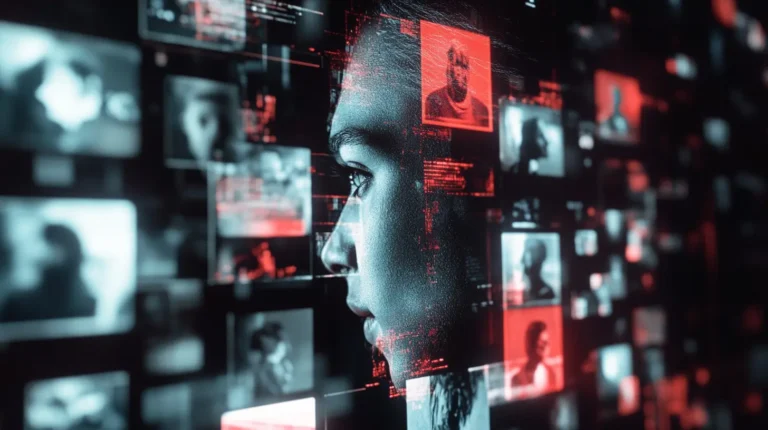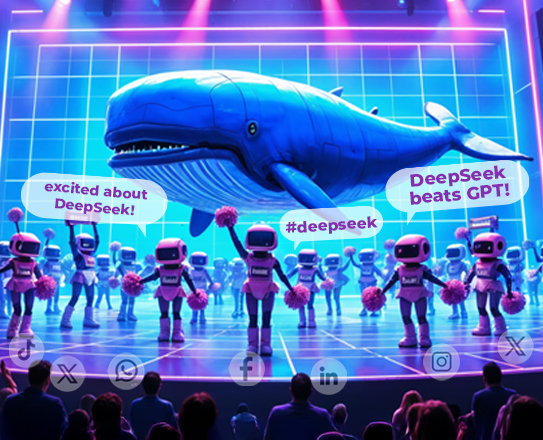Managed Security Service Providers (MSSPs) play a critical role in protecting organizations from cybersecurity threats, such as phishing, hackers, data theft, and other security breaches. However, MSSPs are usually very focused on those traditional cybersecurity threats, and aren’t aware of the world of Social Media Threat Intelligence and the risks emerging from it.
The emergence of social media threats has added a new layer of complexity to the already intricate task of safeguarding organizations against cyber threats. Here’s why MSSPs should make sure they are aware of those threats and are covered against them:
1. Social Media Threats Are Expanding.
That point might seem obvious: every year, social media platforms break their own record number of users. Social media platforms are now an integral part of our daily lives: everything happens online, and everything starts online. Companies’ marketing and PR teams are well aware of the importance of social media, and proactively use it to promote their company online: to increase views, engagements, and positive sentiment.
However, those social media and marketing teams are not tracking social media threat intelligence risks, nor should they. Threat and cybersecurity teams, as well as MSSPs, are those who have the wide knowledge and education to identify and defend a company against those threats. Those teams should consider the threat of a fake profile impersonating their company or a bot network spreading negative information just as gravely as they would consider a fake domain of their company or a mention of an executive on the deep or dark web. This is also the reason why those teams should start being proactive about social media threat intelligence.
Social media threats expand rapidly in tandem with the expansion of the platforms from which they originate, making those platforms an active threat field that requires constant watching and monitoring. Here are some of the growing social media threats MSSPs should be wary of:
Social Engineering Attacks
Cybercriminals, hackers and other bad actors use bots and fake profiles to exploit unsuspecting clients, employees, and executives, using one or more of the following methods.
- Impersonations: Malicious actors impersonate trusted entities, creating fake profiles with the aim of drawing unsuspecting clients to fall victim to social phishing.
- Exploiting Blindspots: Hackers take advantage of a company’s weaknesses, like an understaffed customer service center, to offer alternative services that risk the company’s security measures or turn out to be scams. Those bad actors also utilize bot networks to spread their services as widely as possible, harming a company’s reputation (more on that below).
- Data Leaks: With the vast amount of information online, it doesn’t take a social engineering mastermind to uncover personal or sensitive information and share it online, risking the companies’ executives, employees, and physical assets. Using fake profiles and bot networks to share this personal information, those bad actors are not held accountable for their actions, and are effectively hiding from law enforcement.
Brand Reputation Attacks
- Inside Threats: Disgruntled or frustrated employees can target any company, sharing confidential data, venting frustration and taking revenge, and slandering a company’s reputation. Even well-meaning employees can disclose sensitive information unintentionally.
- Fake News and Rumors: The recent financial crisis and the fall of Silicon Valley Bank brought a wave of rumors that spread on social media and caused huge financial damage to First Republic Bank. In recent years we’ve also witnessed waves of conspiracies hurting the reputation of huge brands like Balenciaga, Disney, and many others.
In the past, these attacks would rise and fall, but with the help of bot networks and other fake profiles harnessing the platforms’ algorithms, it is now easier than ever to flood social networks with fake negative content and even conspiracy theories that reach hundreds of millions of views, harming a company’s reputation beyond repair. - Boycotts and Consumer Hate: A miscalculated PR campaign or even a single negative incident can bring waves of consumer hate, calls for boycotts, and other reputational damages, tarnishing a company’s name.
2. Social Media Threats Are Evolving.
MSSPs aim to safeguard clients against a diverse spectrum of cyber threats, and as we saw, a substantial portion of these threats now emanates from the digital realm — a proportion that is not only increasing but also often overlooked or underestimated.
The attack surfaces and the variety of those assaults are also in constant evolvement. Social media threats are not static – they continuously improve in terms of tactics, techniques, intelligence and procedures. Here are some of the challenges of uncovering and fighting social media threats:
- The Complexity of Analyzing: Identifying social media threats requires advanced monitoring and analysis tools, capable of scanning various social media platforms, sifting through vast amounts of data, and uncovering the real threats.
- Detecting Fake Profiles and GenAI Content: Distinguishing genuine profiles from bots has become a huge challenge due to the new GenAI tools. Bad actors spreading disinformation and propaganda utilize AI-generated text and images to promote their agendas, as well as sophisticated bot networks that can be bought by the thousand. Detecting GenAI content has become practically impossible without advanced detection tools.
- The Rapid Spread Requires Swift Response: Social media attacks can spread like wildfire, making containment and mitigation a daunting task. A single click can lead to the rapid dissemination of the attack, causing extensive damage. Monitoring every platform 24-7 is no longer a task achievable without . Swift response in real-time is the other side of this equation: when a crisis occurs, detecting it quickly, and then mitigating and responding in real-time may be the only way to avoid massive damage.
3. Social Media Threats Are Manifesting in the Real World.
This final point might be the most concerning one: if in the past social media threats were limited to the damage they could do in the online world, or at worst, harm a company’s reputation, in recent years, they have emerged as real-world risks and dangers. Protests that start online can transform into real-world rallies and demonstrations within a day, sometimes even within hours. Protestors can easily uncover details about company events such as annual investor or shareholders meetings, conferences, and other events. Those same protestors can then gather in huge crowds to create a disturbance or cause damage to property and employees. Similar threats can be directed toward executives whose home addresses can be uncovered, and result in harassment of those executives or their families.
MSSPs should be aware of those threats manifesting in the real world, and be able to give the company’s security and safety teams the information they require to handle those threats, in order to protect their employees and assets.
Can MSSPs Find the Missing Piece?
MSSPs are often the last line of defense. Social media threats require them to be the first line as well: to proactively monitor, analyze, and respond in real-time instead of passively safeguarding their clients.
The integration of social media threats into managed security services is not just a matter of choice but a necessity in today’s cyber landscape. It is imperative that MSSPs understand the expanding attack surfaces, the evolving nature of these dangers, and the need for proactive solutions that include social media threat intelligence. With the right tools, MSSPs can effectively address online threats and enhance their clients’ online and offline safety in this ever-changing digital world.
Contact Cyabra to learn more about creating a comprehensive social media threat landscape for MSSPs.


